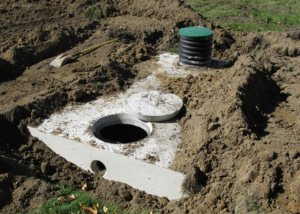A clean workspace helps improve the productivity of employees. It can also keep people healthier and reduce distractions that interfere with work.

Office Cleaning Services Near Me include a range of tasks that go beyond surface cleaning. Commercial office cleaners can shampoo carpets and deep clean floors, as well as clean parking spaces and appliances.
The workplace is more than a place to do business; it is an employee’s home-away-from-home and the environment has a huge impact on the health, happiness, and productivity of employees. Providing regular office cleaning services is an important factor in maintaining a happy, healthy work culture and boosting overall employee morale.
The moment your employees walk into the workplace, they’re influenced by the cleanliness of their environment and how comfortable they feel working there. Clutter, dirty surfaces, and unkempt areas can make them feel stressed and overwhelmed, which in turn lowers their motivation levels and productivity. Professional office cleaners provide a high-quality physical environment that promotes an inviting, organized and productive workspace.
When your employees have to spend less time cleaning up their space and more time actually getting work done, they’re able to focus more on the tasks at hand and will be more satisfied with the results. This boost in satisfaction can also lead to a higher level of long-term job satisfaction and loyalty.
Studies show that the average employee spends one-third of their lives at the office – either in their own offices or in meetings. As such, the workplace has a huge impact on their emotional, physical, and mental well-being. A clean, healthy workplace demonstrates that your company cares about your employees and wants them to be happy and comfortable.
Investing in regular office cleaning services is an easy way to help your employees enjoy their work and will contribute to a more productive, satisfied workforce in Rock Hill, Fort Mill, South Charlotte, and the surrounding area. For more information on how professional janitorial services can support your team’s wellbeing and productivity, contact us today.
Reduces Stress
Clutter can lead to a variety of issues, including decreased productivity and lowered morale. Having an organised and hygienic workplace can reduce the amount of clutter, making it easier for employees to get their work done. With busy work schedules, it’s often hard for employees to find the time to clean and maintain their workplace. Commercial cleaning services can take over these tasks, freeing up employee time so they can focus on their job and the business.
Hiring a professional cleaning service provides many benefits. Their experience and knowledge of the best products and techniques help keep your workspace hygienic and spotless. They can also address specific issues that might not be noticed by an employee who does not regularly walk the building, such as dust in ceiling fans or mold in damp corners.
Cleaning companies can help to boost staff morale by getting them involved in the process. They can create task lists that distribute cleaning responsibilities evenly or encourage individuals to take pride in their personal workspaces by keeping them neat and tidy. They can also set up regular maintenance sessions to ensure that all areas are cleaned thoroughly. These routine visits can also help to reduce stress levels and improve overall mental wellbeing.
A clean and tidy workplace can improve employee morale, increase happiness and make them feel more engaged with their work. It can also help to reduce stress and prevent the spread of germs that can lead to illness and lost productivity. Keeping your office clean is important for both physical and mental health, so consider hiring professional cleaning services to help with the ongoing maintenance of your workspace.
Boosts Productivity
It’s difficult to work productively in a messy environment. Cluttered desks, overflowing waste bins, and funky odors can distract employees from their important tasks at hand. Studies have shown that a clean workspace can boost productivity up to 15%. Premium cleaning services ensure a clutter-free and organized workplace, allowing employees to focus on their jobs without getting sidetracked by messiness.
In addition to boosting morale, a clean workspace sends the message that your company cares about its workers. This can inspire employees to take pride in their job and their workplace, and may even contribute to higher employee performance and satisfaction. Keeping the office tidy also makes it easier for employees to find and use necessary tools and supplies, such as brooms, dustpans, soap, paper towels, and disinfectant wipes. If these items are difficult to locate or out of stock, it’s easy for workers to shift cleanup duties to someone else, citing “more pressing matters.”
In addition to helping employees stay focused on their job at hand, a clean and organized office can make an excellent impression on visitors and customers. It can also encourage return visits and customer loyalty, which in turn can lead to increased sales and revenue for your business. A clean building also typically requires less maintenance, which can save you money in the long run. Lastly, a clean workplace is easier to keep healthy, which can reduce the risk of illness and absenteeism among employees.
Reduces Germs
Germs are a leading cause of workplace illnesses, and a clean workspace is the best way to minimize them. Office cleaning services thoroughly sanitize surfaces and common areas, helping to reduce the spread of germs. This, in turn, leads to fewer sick days and improved employee morale.
Shared surfaces like desktops, doorknobs, and break room equipment are hotspots for the spread of viruses and bacteria. Without proper disinfection, these surfaces can harbor germs that linger for hours or even days, increasing the risk of illness for everyone who touches them. Office Cleaning Services target high-touch surfaces and touchpoints, killing germs before they can spread throughout the office.
In addition to sanitizing shared equipment, Office Cleaning Services also wipe down surfaces that are personal to each employee, such as desks and keyboards. Dust, food crumbs, and fingerprints can all collect on these personal spaces, so it is important to regularly wipe them down. In addition, garbage cans can become breeding grounds for mold and bacteria if not properly emptied and liners replaced. Office Cleaning Services keep these spaces hygienic and smelling fresh by removing trash, cleaning liners, and sanitizing garbage bins.
When employees feel healthy and energized, they are more productive at work. Office Cleaning Services help minimize distractions and sick days by keeping the work environment hygienic, which in turn lowers stress levels and promotes overall employee health. A tidy and well-maintained business leaves a positive first impression on clients and customers, too. By reducing the spread of germs, office cleaning services can also save businesses money in the long run by lowering medical costs and lost productivity. For these reasons, hiring professional Office Cleaning Services is a smart investment in the future of your company.
Saves Money
Professional office cleaning services save businesses money in a variety of ways. First, they help prevent employee absenteeism by ensuring a healthy work environment. When employees are sick, they lose valuable time that can be spent on important projects or meetings with clients. Office cleaning professionals will also declutter offices, which helps free up storage space. Finally, a clean environment is more appealing to clients and can help businesses close sales.
Additionally, a clean office will extend the life of furniture and equipment. This can significantly reduce replacement costs. Furthermore, a professional cleaning service can perform preventative maintenance that can reduce costly repairs down the road. For example, they can wipe down surfaces and lubricate moving parts to prevent wear and tear.
A good commercial cleaning company will also use environmentally-friendly cleaning products. These cleaners typically have a lower chemical content and are better for human health than traditional cleaners. They can also be purchased in bulk to further lower the cost. Additionally, many green cleaners are available in concentrated form, allowing them to be diluted precisely according to a specific cleaning job. This can further reduce packaging waste and the need for frequent restocking.
Lastly, a professional cleaning company will be familiar with all the latest commercial cleaning protocols. This is especially true for foodservice and healthcare settings, which have very strict cleaning requirements. In contrast, in-house staff may not be up to speed on the latest cleaning methods and equipment.
While some business owners may balk at the cost of professional office cleaning services, it can be a very cost-effective solution in the long run. By reducing employee absenteeism, improving morale, and saving on replacement costs, a clean office can boost productivity and increase business revenue.
